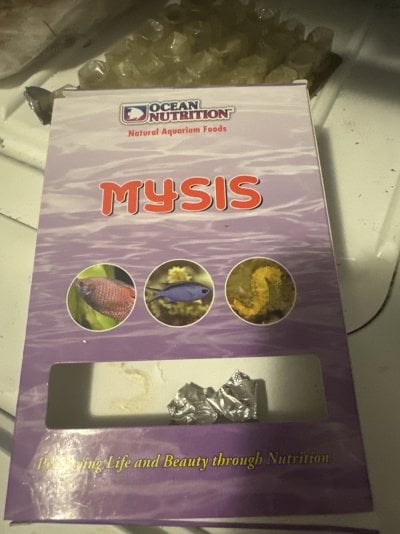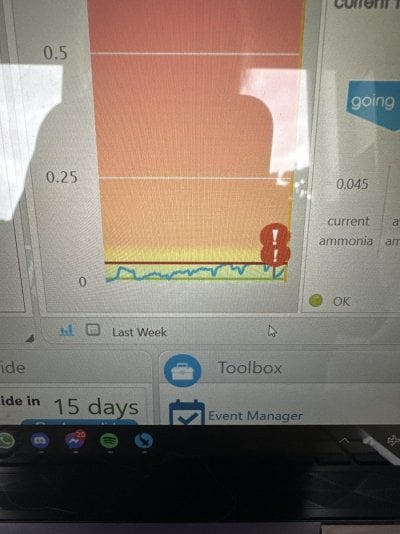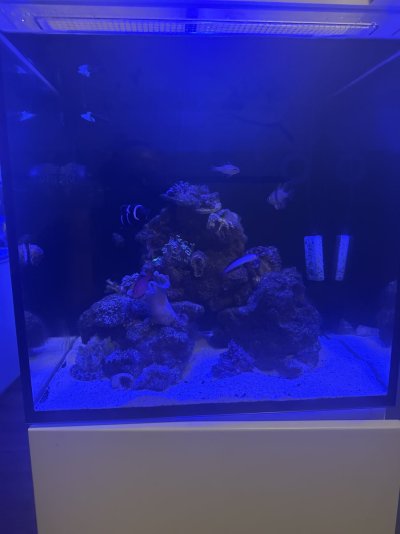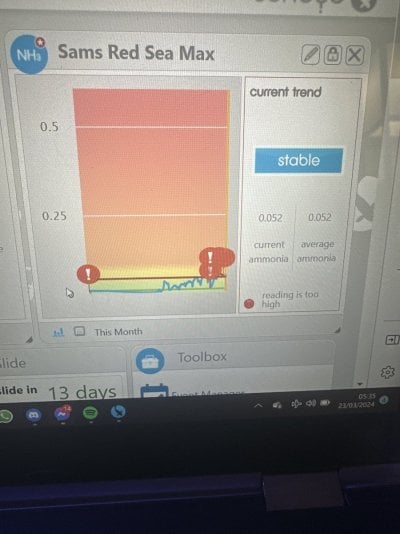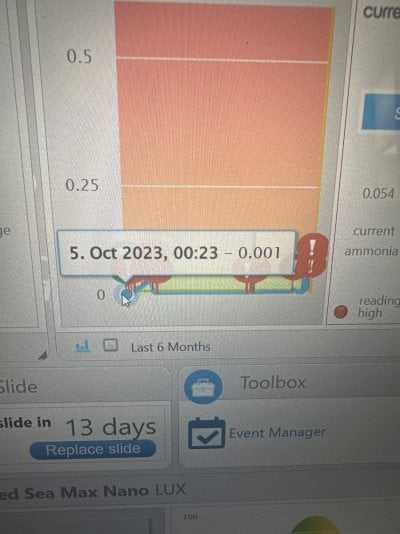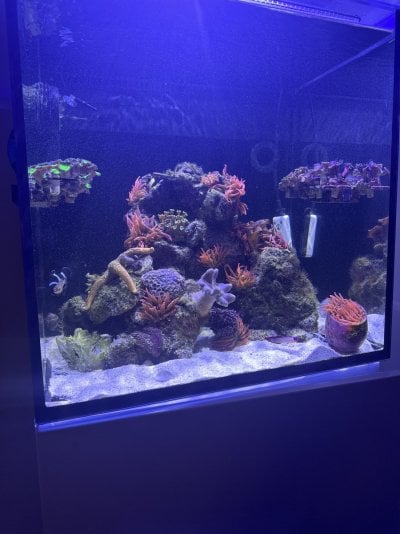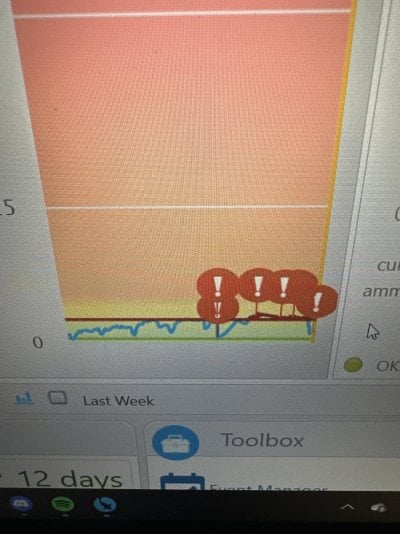Let’s see where the test kit balances out over the next few days. A big feeding event can cause this, in those conditions.
No ammonia symptoms are seen in the tank animals, that factors
Due to the near certainty of disease outbreak in the works, the fish bioload should be reduced down to a manageable starting load of two fish. Run them a while and calibrate the seneye to a balanced fish bioload setup, it’s what the trim function is used for on the device settings
After the reef runs normally with a small fish load, add in slowly more fish that are matched in behavior and disease preps for the system. Don’t add prime, bottle bacteria or any doser for ammonia control here
The fish need to be reduced to a manageable level, accumulated feed and waste will run high here. The seneye hadn’t been calibrated to a reasonable bioload to know where it seats. Just the other day in the chem forum, a guy had a running reef and his seneye seated at .04 after cycling, so in that context these readings aren’t alert level.
The device is so sensitive there’s a trim setting where you use it with calibration proofs to set the running range of nh3 into the mid .00x range for daily running, then the peaks and troughs don’t look so dangerous.
The calibration proofs are: a reasonably stocked reef tank using the normal degree of live rock anyone would use, well after cycling has been completed and the tank is already stocked and running. When you install a seneye on a tank like that, if it doesn’t read in the thousandths ppm nh3 feel free to trim it to to do so, that’s what the setting is for.
Where this tank doesn’t fit with the calibration proof is with bioload rate, it’s too high for accurate benchmarking. Calibrate the seneye on a reasonable two fish
Then, as you add new fish, the readout determines your levels. Don’t stock above .007 ppm nh3 daily averages. The seneye in this thread hasn’t been benchmarked, with the calibration proofs in place and the stock rate is too high to do that currently.
the fish aren’t showing ammonia poisoning but the disease outbreak and waste loading from the packed system will make it hard to run long term. If a super high bioload is the goal, it’s attained. To lower your fish disease rates you’d reduce the stock levels, the ammonia control isn’t an issue so far. Until the meter is trim set and calibrated on your tank it isn’t as accurate as it could be.
if you calibrated that seneye you could use it to quickly find new reefing material nobody has charted, several things about bacteria nobody knows awaits to be answered and seneye owners with calibrated meters are pretty much the only group who’s going to make the proofs. U gotta benchmark that great gear. You’ll be surprised how many fish that tank can keep at below .007 nh3 and it might even be that current load allows it, if nothing dies. Then it would tip fast.
When you use the trim function to move the meter to, let’s say .002 nh3 on a common nano running two fish, that lines up with thousands of other posts from other seneyes in pattern. Then, on that adjusted baseline in the thousandths you stock up your tank, and don’t exceed .007 ppm nh3, that’s a very high rate. I’ve never seen a calibrated seneye run that even in a high bioload tank so it’s a very forgiving max level.
No ammonia symptoms are seen in the tank animals, that factors
Due to the near certainty of disease outbreak in the works, the fish bioload should be reduced down to a manageable starting load of two fish. Run them a while and calibrate the seneye to a balanced fish bioload setup, it’s what the trim function is used for on the device settings
After the reef runs normally with a small fish load, add in slowly more fish that are matched in behavior and disease preps for the system. Don’t add prime, bottle bacteria or any doser for ammonia control here
The fish need to be reduced to a manageable level, accumulated feed and waste will run high here. The seneye hadn’t been calibrated to a reasonable bioload to know where it seats. Just the other day in the chem forum, a guy had a running reef and his seneye seated at .04 after cycling, so in that context these readings aren’t alert level.
The device is so sensitive there’s a trim setting where you use it with calibration proofs to set the running range of nh3 into the mid .00x range for daily running, then the peaks and troughs don’t look so dangerous.
The calibration proofs are: a reasonably stocked reef tank using the normal degree of live rock anyone would use, well after cycling has been completed and the tank is already stocked and running. When you install a seneye on a tank like that, if it doesn’t read in the thousandths ppm nh3 feel free to trim it to to do so, that’s what the setting is for.
Where this tank doesn’t fit with the calibration proof is with bioload rate, it’s too high for accurate benchmarking. Calibrate the seneye on a reasonable two fish
Then, as you add new fish, the readout determines your levels. Don’t stock above .007 ppm nh3 daily averages. The seneye in this thread hasn’t been benchmarked, with the calibration proofs in place and the stock rate is too high to do that currently.
the fish aren’t showing ammonia poisoning but the disease outbreak and waste loading from the packed system will make it hard to run long term. If a super high bioload is the goal, it’s attained. To lower your fish disease rates you’d reduce the stock levels, the ammonia control isn’t an issue so far. Until the meter is trim set and calibrated on your tank it isn’t as accurate as it could be.
if you calibrated that seneye you could use it to quickly find new reefing material nobody has charted, several things about bacteria nobody knows awaits to be answered and seneye owners with calibrated meters are pretty much the only group who’s going to make the proofs. U gotta benchmark that great gear. You’ll be surprised how many fish that tank can keep at below .007 nh3 and it might even be that current load allows it, if nothing dies. Then it would tip fast.
When you use the trim function to move the meter to, let’s say .002 nh3 on a common nano running two fish, that lines up with thousands of other posts from other seneyes in pattern. Then, on that adjusted baseline in the thousandths you stock up your tank, and don’t exceed .007 ppm nh3, that’s a very high rate. I’ve never seen a calibrated seneye run that even in a high bioload tank so it’s a very forgiving max level.
Last edited:






